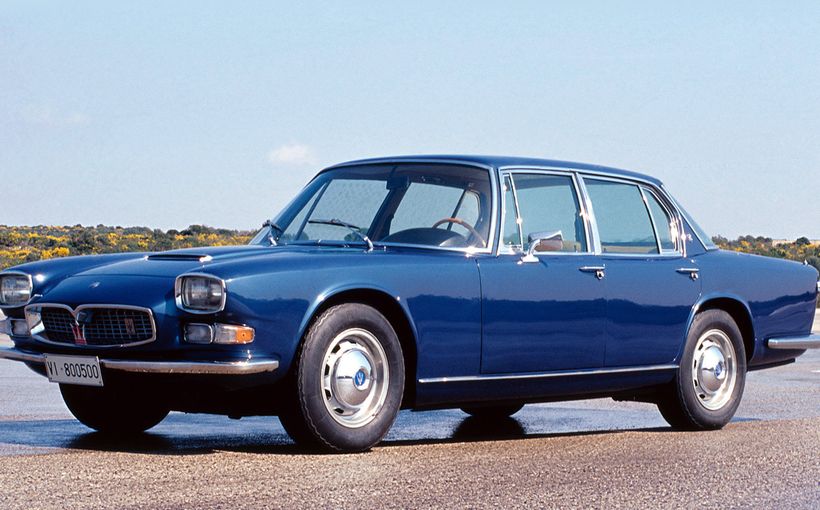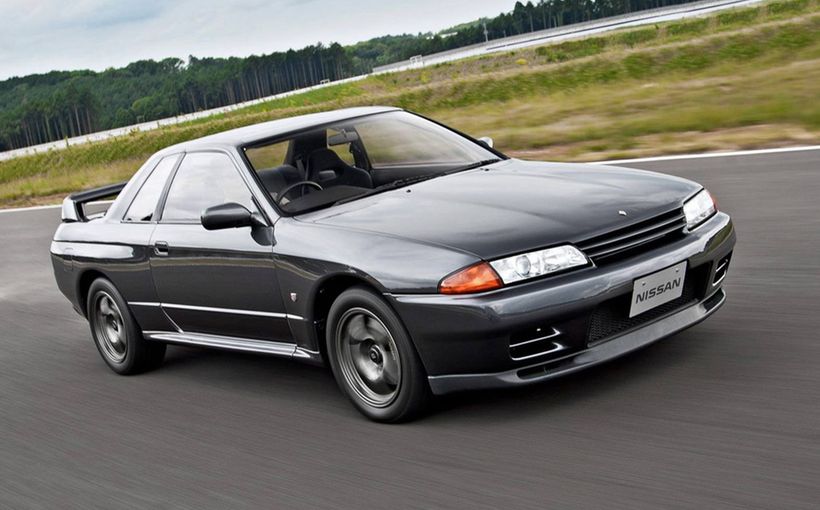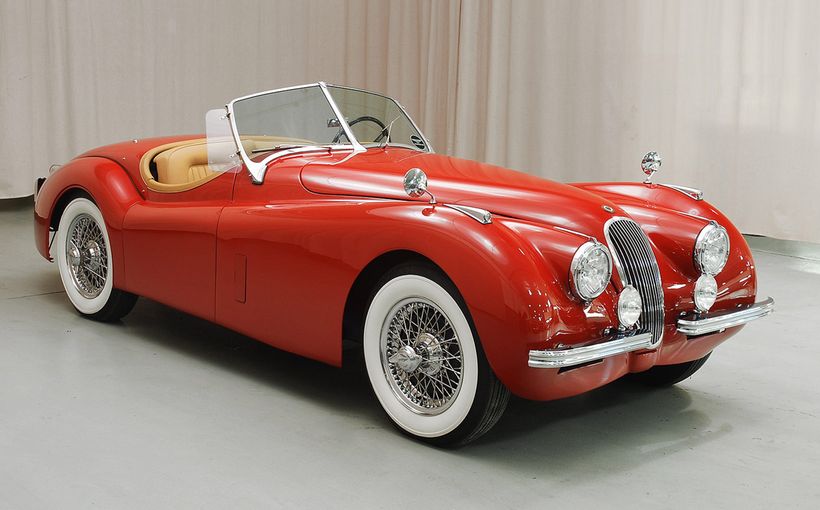Toyota AE86 Sprinter: lamb in wolf’s clothing

Even in July 1983 when it made its Australian debut, the Toyota AE86 Sprinter was already something of an oddity, a small rear-wheel drive 1.6-litre coupe in what was rapidly becoming a front-wheel drive market.
Sure we had the rear-drive Mitsubishi Sigma, Datsun Bluebird and the like, but by 1983 most new medium sedans (Holden Camira, Mazda 626/Ford Telstar) and virtually all small ones were front-drivers.
Front-wheel drive or rear-wheel drive? Heading into the 1980s, and despite the fact that many of its rivals had already switched from the formerly orthodox rear-wheel drive to the system used on all Citroens since 1934 and on many others from the launch of the Issigonis Morris Mini-Minor/Austin Seven twins since 1959, the Toyota executives could not make a simple, clear-cut decision.
This had long been an interesting question for product planners. For the Toyota heavies, the issue was not straightforward. There is evidence of other manufacturers struggling with it. The most obvious example is Leyland, whose compact but complex front-drive Triumph 1300 appeared in 1965. Chief engineer Harry Webster followed BMC’s lead in opting for the more efficient packaging which a front-wheel drive configuration offered. But the 1300 was expensive to build and the interesting decision was taken to re-engineer it to create an entry level rear-drive version, a task made less daunting by the longitudinal mounting of the engine. Within eight years, all variants of the car – now renamed Dolomite – had been reverse-engineered into rear-wheel drive.

There is no evidence that Toyota considered the Triumph approach because it resolved – at least in product planning for the mid-1980s – the issue in almost the opposite direction: its less expensive versions of the next generation Corolla would be front-drivers, while the up-spec, more enthusiast-oriented editions would retain what was still regarded as the ‘conventional’ rear-wheel drive arrangement.
And so, after watching and waiting for some years – and as if reluctantly – the company launched its first front-drive Corolla for model year 1984; the rear-wheel drive Corolla had notched up enormous sales since its 1966 debut (1967 in Australia). Just as our own Holden Gemini was a rear-driver right through from its 1975 launch until 1984 when the front-drive RB model arrived to virtually no discernible market, the Corolla had stuck to the same winning formula.
Then came the change, but even so Toyota was hedging its bets. There was a strongly held view that enthusiasts would not like to experience the torque steer that was the inevitable outcome of sending a high level of power to the wheels that also had to handle the steering duties. What to do? Simple. The common or garden Corolla sedans and wagons made the change, while the higher performance coupe versions persisted with the old orthodoxy.

But where the longitudinal mounting of the Triumph 1300’s engine had made the transition to rear-wheel drive more straightforward, Toyota took no shortcuts in its transition from rear-wheel drive to front. The new Corolla went the whole way with a transverse engine. But the rear-drive Sprinter still had its engine placed longitudinally. Small wonder, then, that story on the new Corollas by Hattori Yoshi in the August 1983 edition of Wheels was entitled ‘Confuse and Conquer’:
Even Toyota can’t buck the trends. So at last, after watching and waiting for three years, it has produced a front-wheel drive Corolla. But the coupes, which get more power, stick with rear-drive.
And, way back in mid-1983 before drifting was the huge sport it is now, Toyota’s heavies almost predicted this future (in which the AE86 Sprinter is one of the heroes:
But why retain rear drive and a rigid axle? According to Akimichi Fujisawa, assistant manager, product management, the Japanese like rear-drive coupes, because they want to be able to slide the rear end.
Toyota's research could be summed up simply: give the lads rear-drive and the dads and mums front-drive with all its advantages in packaging. But, wait, there's more. The most exciting of all smallish Toyotas would make its debut a few years later. This was the MR2 and it was different again, combining rear-wheel drive with a twin cam multi-valve engine mounted amidships.

It is now obvious that model year 1984 was about the last time any mainstream small car was given rear-wheel drive. There were upmarket exceptions, such as the BMW 3-Series and Mercedes-Benz W201 190, but front-wheel drive with its advantages in packaging and lower costs had prevailed. Like these cars, the Sprinter had its engine mounted north-south and it offered good access for mechanics.
The question of configuration threw up some interesting choices: Toyota Sprinter or Ford Laser Sport; BMW 318i sedan or Saab 900 5-door; Renault 20TS or Peugeot 505? Juries were out in the mid-1980s.
Whatever reservations Toyota's product planners had about torque steer, they must have been short-lived. The 1985 Celica SX and 1986 Corolla Twin Cam engines had the sweetest, revviest double overhead camshaft 16-valve engines you could imagine, driving through the front wheels with far more force than the Aussie Sprinter sent to the rears. (But the hefty Supra coupe was always a rear-driver.)

The Toyota Corolla Sprinter, available in two-door, three-door coupes and four-door sedans in Japan, was exported to Australia only in three-door (hatchback) guise, the first examples arriving time for spring in 1983. This sporty rear-driver was the natural successor to the T18, a nifty looker heavily criticised by Wheels magazine among others for ordinary handling. But wouldn't we love to have one now?
Unfortunately, the Sprinter offered to Aussies did not have the performance promised by its looks. Japanese customers could enjoy a twin-cam multi-valve engine, such as we would see in the first front-wheel drive Celica in 1985 and in the Twin Cam Corolla the following year. The topline Sprinter in Japan was the Levin with a new twin-cam 16-valve engine making 96kW.

In its road test, published in the October 1983 edition, Wheels used the heading 'Spirited Sprinter'; obviously the alliteration encouraged someone, but the text tells a somewhat less encouraging story.
The Sprinter was criticised for having a front suspension 'far too soft for Australian conditions,' having too much engine noise. As well, the tester, Bob Murray, said it was poorly ventilated, had too much front bias in braking and excessive wind noise.
At $11,200, the Toyota Sprinter was hardly bargain basement fare in 1983. An extra $185 bought you a Honda Accord, while the perky twin-carburettor (front-wheel drive, and none the worse for it) Mazda 323 SS cost just $10,785. The Fiat Super Brava Mark II (rear-wheel drive) with 89kW was one of the bargains, at $12,700.
Australian-delivered Sprinters made 58kW, which was less than 60 per cent of what Toyota Australia would claim for its Corolla SX in 1989. Incidentally, the 1983 rear-wheel drive Corolla, which got along OK, delivered 54kW, just four down on the Sprinter. But the latter had a five-speed gearbox, a luxury not available in 1983 on Toyota's entry level sub-brand.

The Sprinter badge first came to Australia appended to a fully imported up-spec edition of the original Corolla. But the 1983 Sprinter was never presented locally as an upmarket Corolla, although essentially that’s what it was.
Fifty-eight kiloWatts may sound meagre, but remember how much less cars weighed back in those days. The Sprinter toted just 945kg. Given this, its fuel economy of about 30 miles per gallon was less than brilliant, given the fact that a 1948 Holden weighing roughly the same and with just three forward ratios could achieve this figure.
It was, though, a time of serious change at Toyota and the Sprinter was a kind of threshold car. The company was determined to give at least some of its vehicles more driver appeal. In many respects, the AE86 Sprinter followed the theme established by the fully imported Camry GLi hatch, which arrived in Australia earlier in 1983. Both used a new generation overhead camshaft engine, rack and pinion steering and exhibited higher levels of refinement than our local Corollas and Coronas, or for that matter the last of the rear-drive Celicas. But there was much more to come within the next two to three years.

As well as having a fair turn of speed on the open road, the Sprinter was a great town car. With peak torque arriving at just 2400rpm, it did not need to be rowed along on the gears. On the highway, the high-geared fifth ratio gave 35.3km/h per 1000rpm, which was very long-legged for a four-cylinder car of its day.
The low driving position, supportive seats and the inclusion of a tachometer in the neat display of instruments all added to the Sprinter's sporty character. Its zero to 100km/h time of 14.4 told less of the story than the figure from rest to a law-defying 130 – an impressive 27 seconds flat, which shows how the car's torque worked in its favour even beyond the legal limit. Incidentally, the speedo was reasonably accurate, indicating 133-34 at a true 130. So, the Sprinter was not really a performance car, but it went reasonably well.
The AE86 Sprinter certainly looked the part with its wide front and rear track, distinct wedge shape and factory alloys when most cars rode on steel wheels with plastic hubcaps (that often made a bid for freedom).
Despite having quite a spacious interior, the Sprinter did not pamper rear seat occupants. Leg room for adults was at a premium and the windows were fixed. The boot was big and the hatchback configuration meant you could carry long items of luggage unless two people occupied the split/fold rear seat.

As far as handling went, the Sprinter had better steering feel than most Toyotas but still suffered from excessive understeer. The shortish wheelbase contributed to the driver's ability to steer the car on the throttle and lifting off helped the nose to turn into the corner as the rear stepped out of line. Body roll was perhaps a little more than you would expect of any car called Sprinter.

But Murray, who clearly rather enjoyed the Sprinter despite its shortcomings, looked for a brighter side in his conclusion:
Still, Toyota has gone on the record as saying that engines are being fixed up this year and suspensions are next, so there's hope.
There's also hope that, in lead-free 1985, we will see the Sprinter with a more potent engine, one of the twin cam multi-valve engines now available in the Sprinter in Japan. Make that 400m time 17.0 seconds instead of 18.5, give the car a crisp bark instead of its present warble and, once properly suspended, the Sprinter could stand a good chance of becoming a baby hotshot of some appeal. Live rear axles, after all, can put 100kW to much better use than any front-drive fancies.
The AE86 Sprinter’s legacy lives on. Toyota’s choice of ‘86’ as the name for its 21st century sports car speaks volumes. This is interesting in another respect, too. Like the 1983 car, the 86 cries out for more power. The passing of the years and the increasing sameness of cars – especially small ones – gives the AE86 Sprinter a serious appeal that it possibly lacked when it was new, even despite being described by Wheels as ‘light years ahead’ of the T18. And if many of us would like to have a T18 in the shed, how much more would we covet an AE86 Sprinter?











